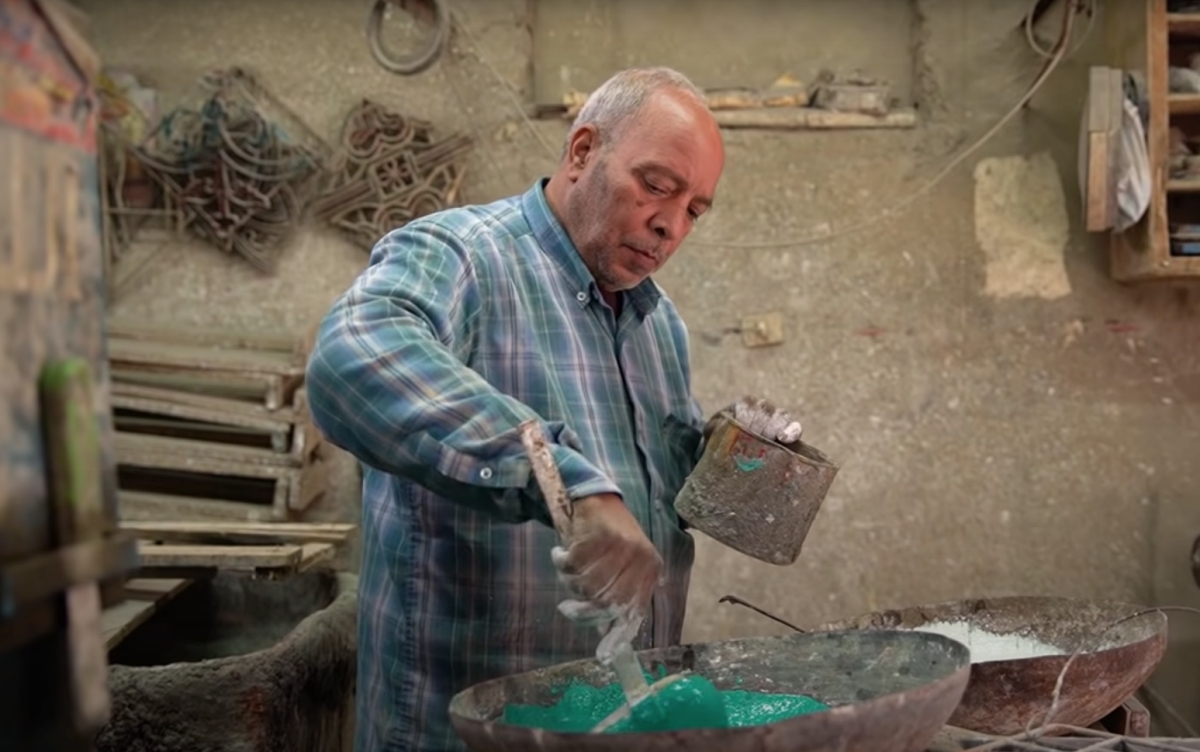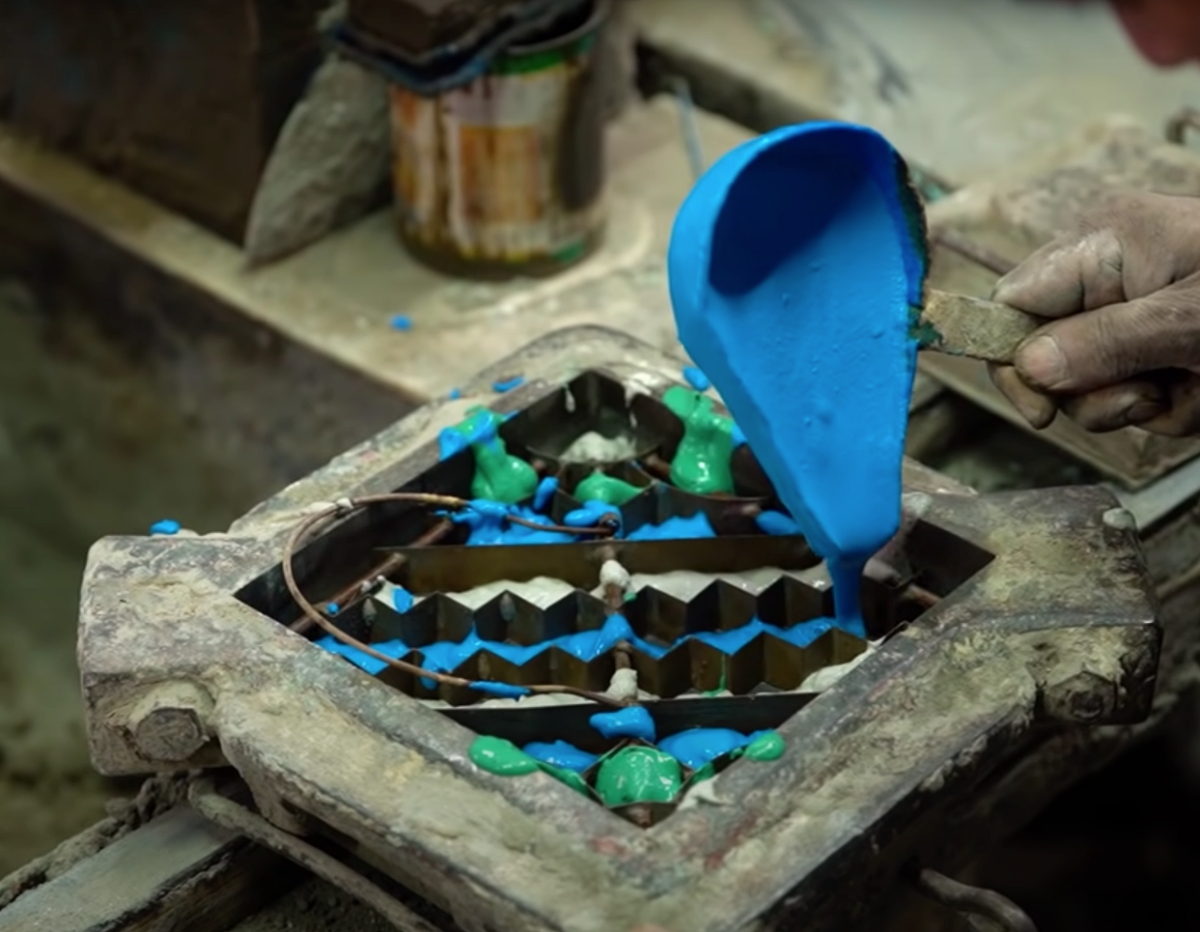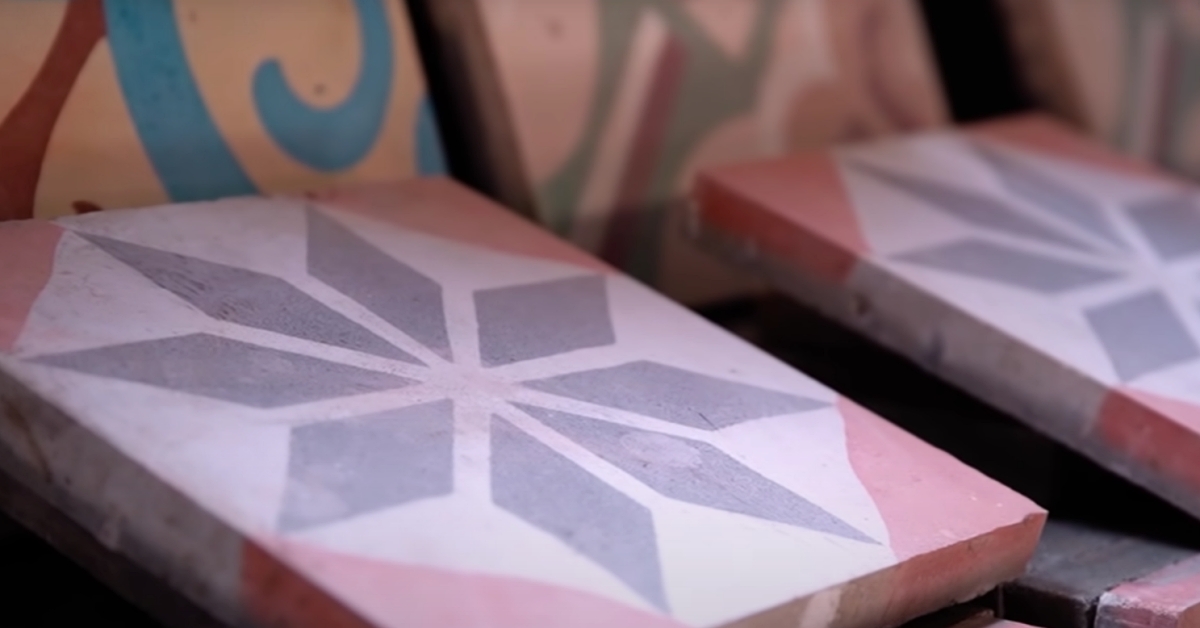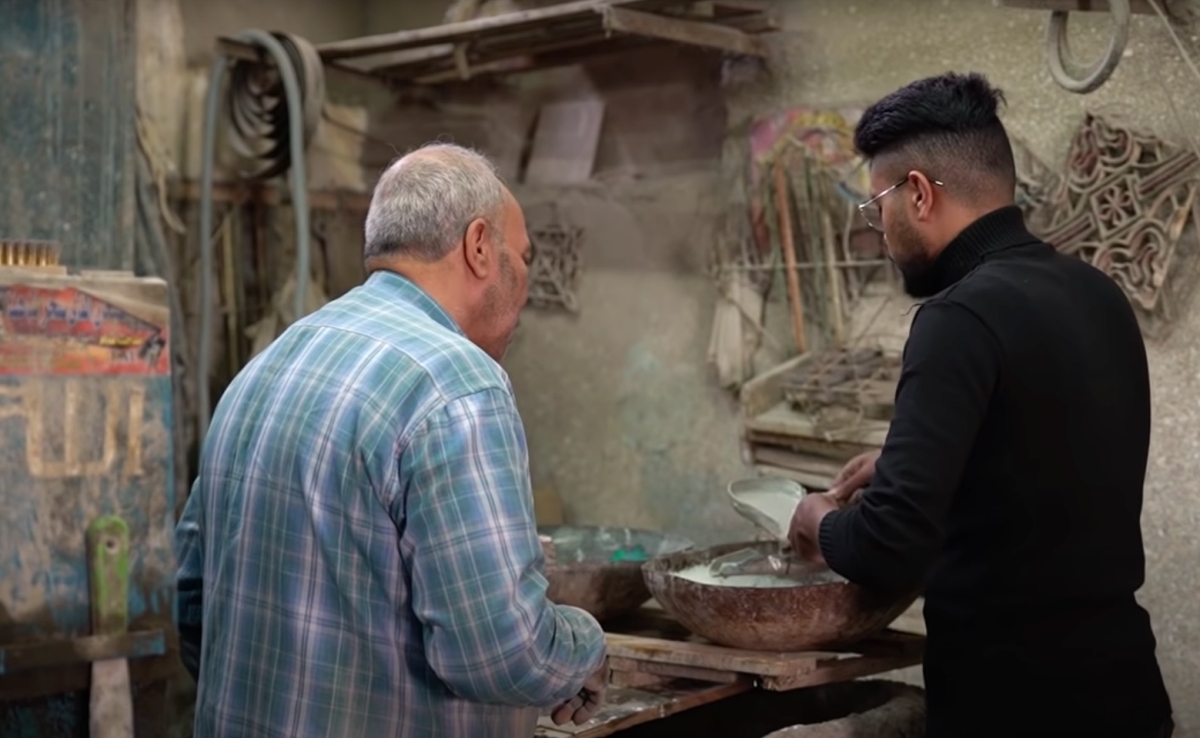How Traditional Greek Cement Tiles Are Still Made by Hand in Egypt
It takes a lot of work to make just one tile.
Saied Hussain has been making traditional Greek cement tiles for decades by hand in a slow, but rewarding process. The dazzling designs in gorgeous colors speak to another era of craftsmanship – one that was nearly obliterated by modern ceramic and marble tile trends. Hussain is one of the last artists in Egypt to make this style of tiles (known in Greece as tsimentenia plakakia) in the old fashioned way. Despite the popularity of such tiles in other countries it is becoming a niche market in Egypt. However, it’s a craft that Hussain hopes to keep alive for another century at least.

The process relies on specialized molds and a keen eye for detail. Hussain measures the pigments by eye and then mixes them with cement powder before adding water. Then the hard part begins: he must carefully pour just the right amount of the mix into stencils which fit inside the mold.

These stencils function much like those pancake shape molds that keep the batter in place. The concrete “batter” needs to be precisely poured into the stencil for the right outcome.
Once this is done the stencil has to be carefully removed without interrupting the pattern underneath. Some of the designs are done freehand, such as the designs that mimic ancient water marble patterns.

The next step is to add cement powder on top of the mold which will be the underside of the finished tile. Then the mold is covered and the tile is put into a hydraulic press which ensures it sets instantly. Hussain and his small team of staff can only do up to 150 tiles per day, in stark contrast to how most tiles are made today.
Hussain is one of the last to make this type of tile in Egypt, but he loves color and loves the craft so he gives free apprenticeships to young artists so that the tradition can live on.

See how these beautiful tiles are made in the video below
SKM: below-content placeholderWhizzco for DOT

